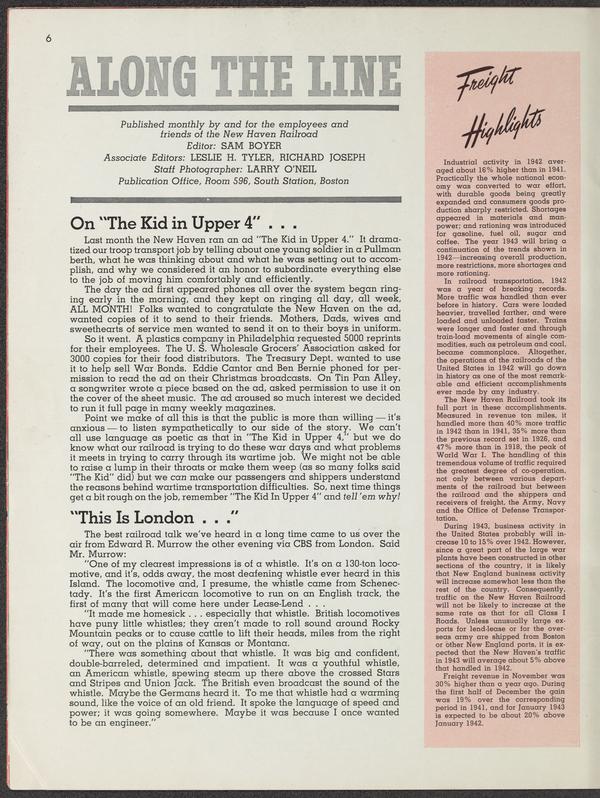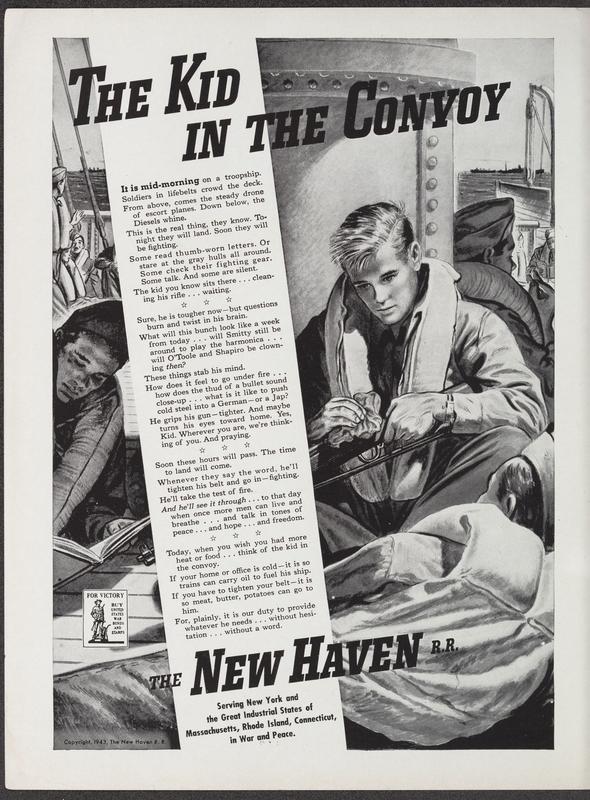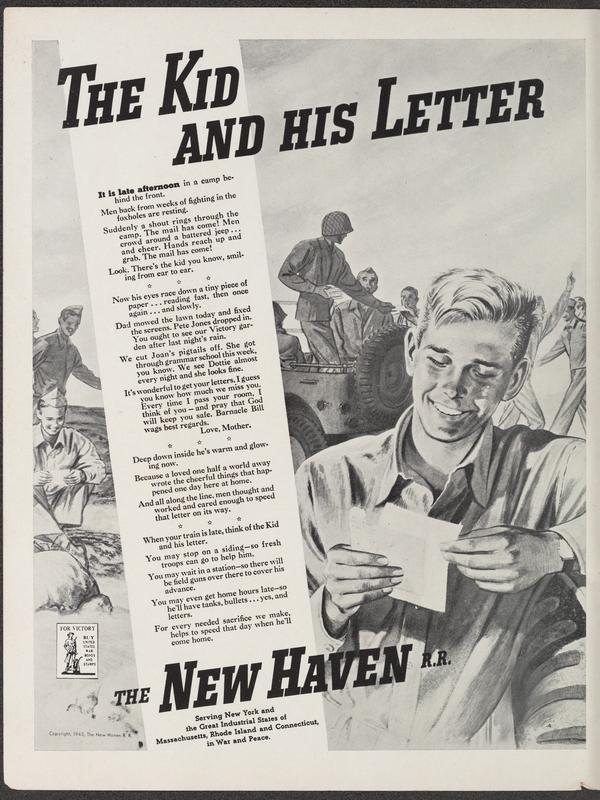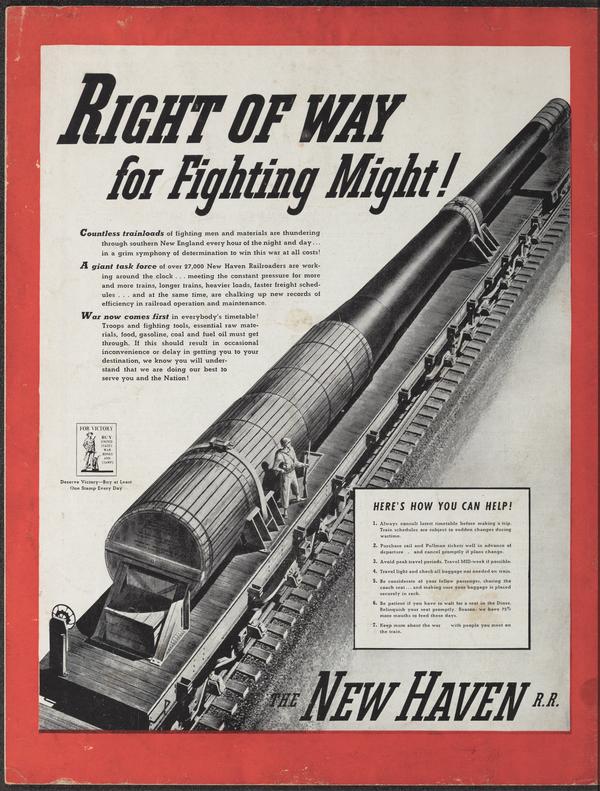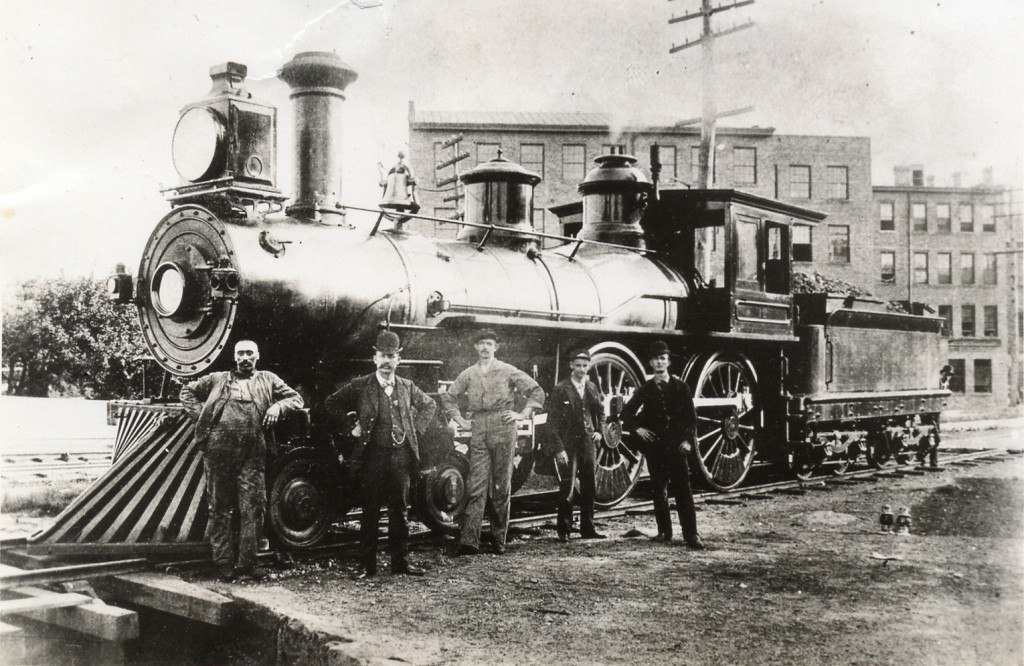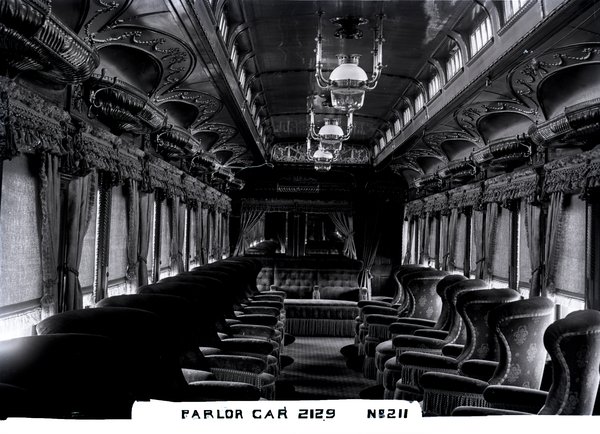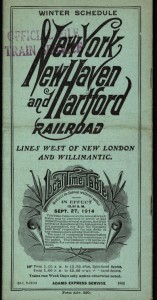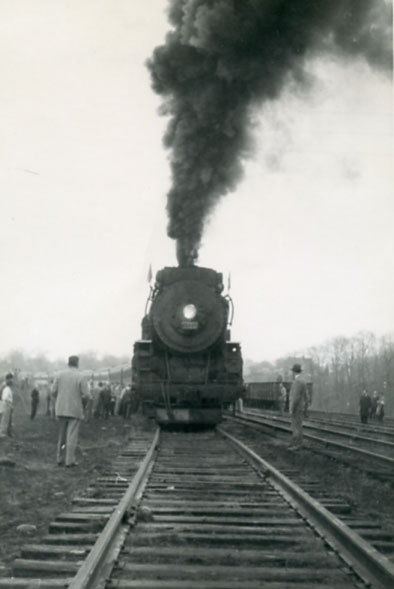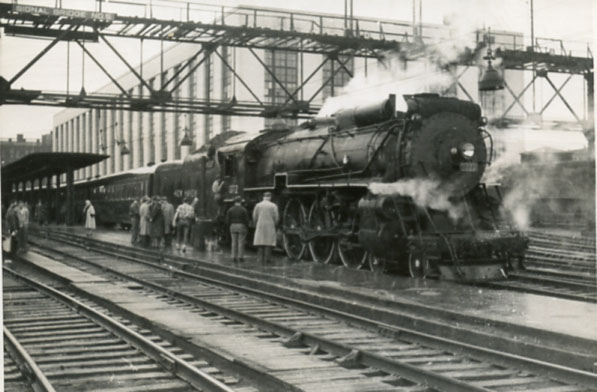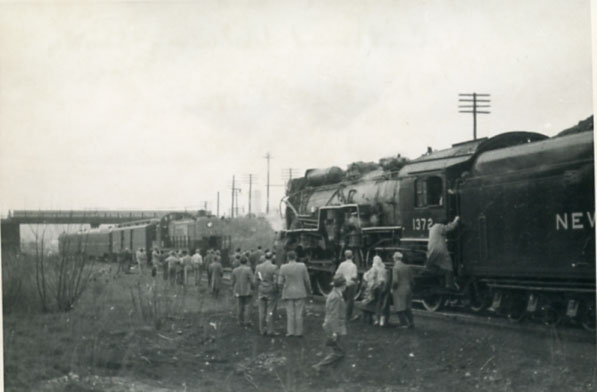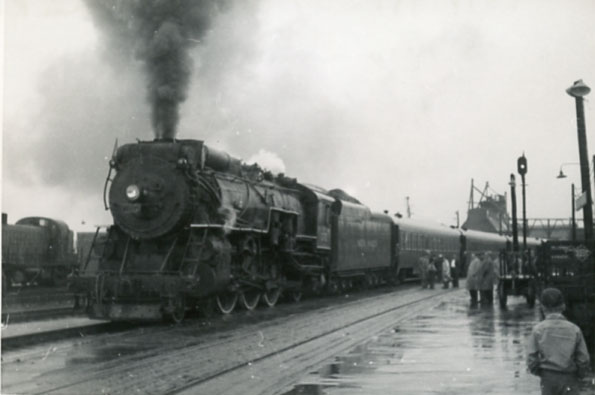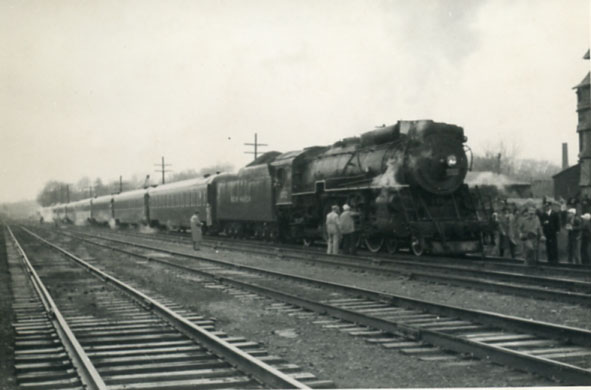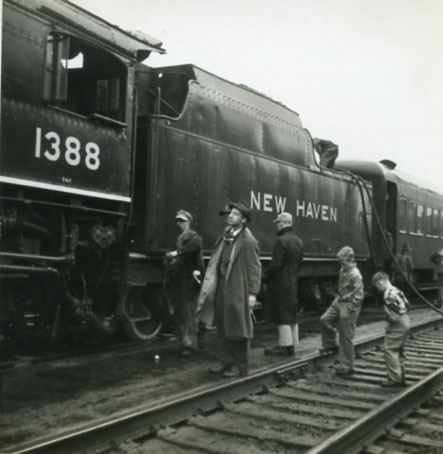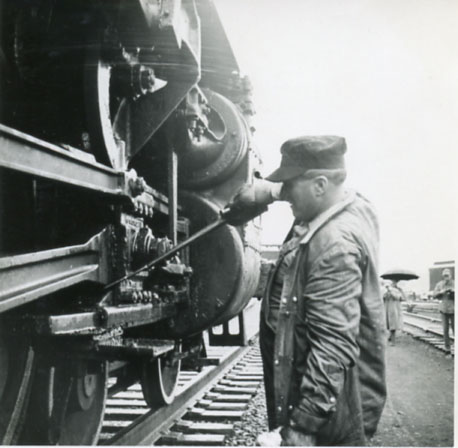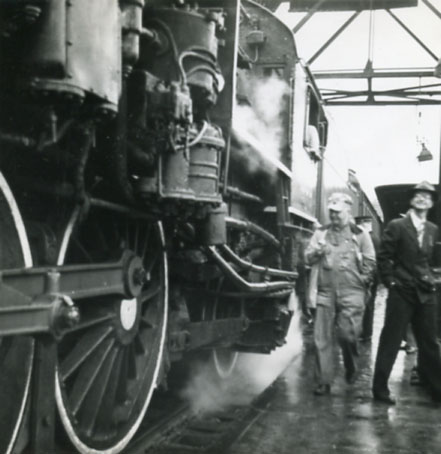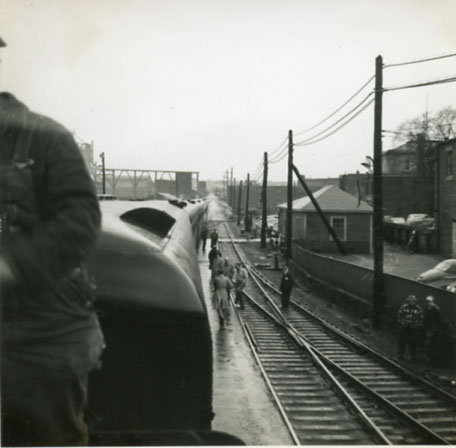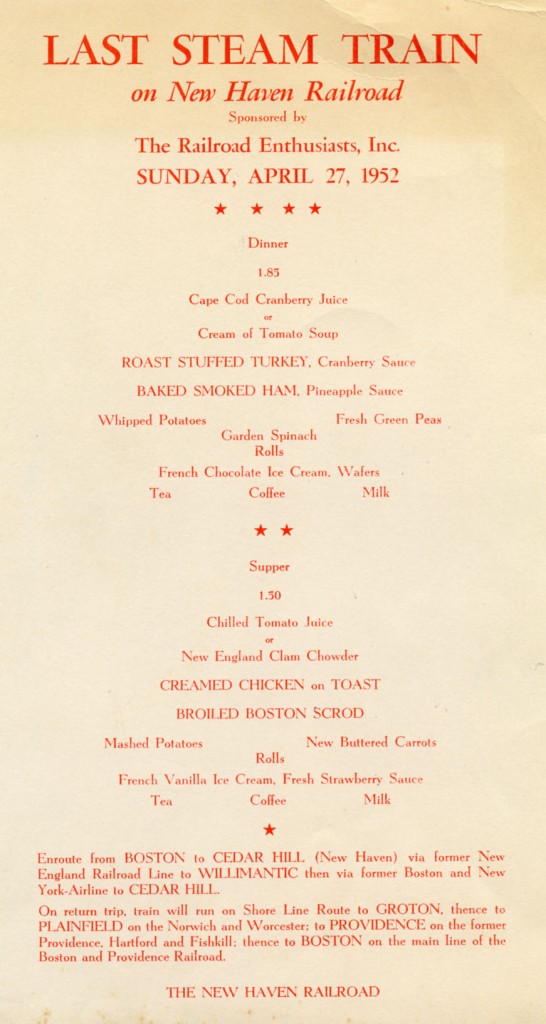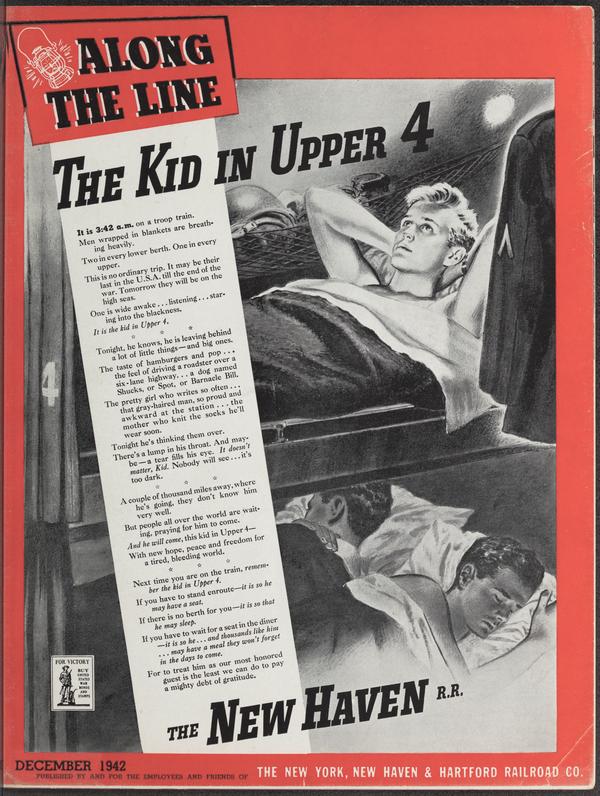
During World War II the New Haven Railroad, which provided passenger and freight service to southern New England including New York City and Boston, found that despite wartime stresses on the railroad company the riding public would consistently and constantly complain about poor service. The railroad suffered during the Great Depression but had a resurgence during the war, which began in December 1941. Its efforts to transport troops, munitions and other wartime supplies to the ports, which were then shipped to the various war fronts in Europe, North Africa and Asia, strained the railroad’s limited resources and resulted in fewer seats and trains available for the general riding public.
The railroad soon turned to its advertising agency, the Wendall P. Colton Company of Boston, to find a way to mollify the complaints and griping. The agency’s first efforts tried to educate the public about the important role played by the New Haven Railroad in the country’s efforts to win the war and defeat fascism. Two ads, “Right of Way for Fighting Might,” which ran in newspapers in New York City and New England in October 1942, and “Thunder Along the Line,” which ran in November 1942, were marginally effective and the complaints continued.
In late 1942 the advertising company gave control of the campaign to Nelson Metcalf, Jr., a 29-year-old Harvard graduate who was fairly new to the advertising profession. Metcalf decided that the best approach was to talk directly to the readers of the ad and play at their emotions. At that time the war touched virtually every citizen of the country, and almost every rider of the railroad had a father, husband, brother or son in the military. Metcalf’s approach played on the thoughts of one soldier, to which all could relate, going to the front on a troop train.
The ad included an image of a fresh-faced young man lying awake in a berth in a sleeping car, and the prose of the ad could not be more compelling. Here is the text in full:
It is 3:42 a.m. on a troop train.
Men wrapped in blankets are breathing heavily.
Two in every lower berth. One in every upper.
This is no ordinary trip. It may be their last in the U.S.A. till the end of the war. Tomorrow they will be on the high seas.
One is wide awake … listening … staring into the blackness.
It is the kid in Upper 4.
Tonight, he knows, he is leaving behind a lot of little things – and big ones.
The taste of hamburgers and pop … the feel of driving a roadster over a six-lane highway … a dog named Shucks, or Spot, or Barnacle Bill.
The pretty girl who writes so often … that gray-haired man, so proud and awkward at the station … the mother who knit the socks he’ll wear soon.
Tonight he’s thinking them over.
There’s a lump in his throat. And maybe – a tear fills his eye.
It doesn’t matter, Kid. Nobody will see … it’s too dark.
A couple of thousand miles away, where he’s going, they don’t know him very well.
But people all over the world are waiting, praying for him to come.
And he will come, this kid in Upper 4.
With new hope, peace and freedom for a tired, bleeding world.
Next time you are on the train, remember the kid in Upper 4.
If you have to stand enroute – it is so he may have a seat.
If there is no berth for you – it is so that he may sleep.
If you have to wait for a seat in the diner – it is so he … and thousands like him … may have a meal they won’t forget in the days to come.
For to treat him as our most honored guest is the least we can do to pay a mighty debt of gratitude.
The ad ran first in the New York Herald Tribune, on November 22, 1942. It was immediately obvious that the ad struck a chord with not just the railroad’s ridership but across America. The railroad and the ad agency immediately started fielding calls and receiving letters with positive responses from the public, other businesses in the industry, and government offices. The ad was soon running in newspapers around the country, as well as Life, Newsweek and Time magazines.It was used to raise money for the Red Cross, to sell U.S. War Bonds, and by the U.S. Army to build morale among servicemen.
As noted by Charles Pinzon and Bruce Swain in their Journalism History article of Fall 2002 about the ad campaign, “by the end of January 1943 even competing railroads had hung full-color posters of the advertisement in their terminals. Within four months of its publication a radio station had dramatized the ad, [famous comedian and actor] Eddie Cantor had read the copy over the air on his hit radio show, a popular song had been written and MGM was in production on a film short.” By March 1943 55,000 reprints had been requested.
The New Haven Railroad was delighted by the ad’s success and ordered the ad agency and Metcalf to create similar “Kid” ads. Although the additional ads, for “The Kid in the Convoy,” “The Kid in the Ward Car,” and others, were similar in tone, none had as much of an impact as the original “Kid” ad. The agency and Metcalf received multiple journalism awards and the railroad was able to guilt the riding public into ceasing their complaints about bad service, at least for a while.
James Twitchell’s book 20 Ads That Shook the World, published in 2000, lists “The Kid in Upper 4” among the most successful campaigns in American history but notes that its success was based on the fact that unlike the typical advertisement it was not selling anything but was “drawing attention away from the client’s lousy product.”
The “Kid” ads shown above are those published in the New Haven Railroad’s employee magazine Along the Line, which can be found in our digital repository at the following links:
December 1942, first ad, “The Kid in Upper 4”: http://hdl.handle.net/11134/20002:860594914
January 1943, about success of The Kid ad: http://hdl.handle.net/11134/20002:860603629
March 1943, “the Kid in the Convoy”: http://hdl.handle.net/11134/20002:860603782
June 1943, “The Kid and his Letter”: http://hdl.handle.net/11134/20002:860603877
September 1943, “The Kid in the Ward Car”: http://hdl.handle.net/11134/20002:860603968
October 1943, “The Kid Takes Over”: http://hdl.handle.net/11134/20002:860603662
Other wartime ads:
October 1942, Right of Way for Fighting Might!: http://hdl.handle.net/11134/20002:860594848
November 1942, Thunder along the Line: http://hdl.handle.net/11134/20002:860594877

